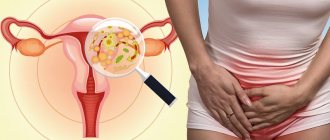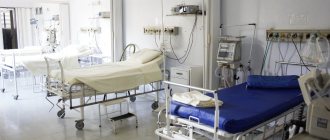Cardiovascular diseases are the leading causes of death among young people (from 25 to 64 years old) in Russia. The main insidiousness of this group of diseases is that they are often asymptomatic, and a person finds out that he has heart problems when it is no longer possible to help him. We talked with EuroMed Clinic cardiologist Olga Aleksandrovna TSURKAN about what cardiac diseases are most common, how they manifest, and what symptoms are recommended to pay attention to.
The heart is a muscular organ that “pumps” blood throughout the body. The heart muscle is called the myocardium, and it constantly works - on average, at rest the heart “pumps” 5 liters of blood per minute, and during intense exercise - more than 15 liters per minute! In order to carry out this work effectively, the coordinated work of the entire system is important: the main muscle (myocardium), atria, ventricles, and blood vessels. The myocardium must be constantly well supplied with nutrients and oxygen. If the functioning of one of the elements of the system is disrupted or the vessels supplying the heart with blood are clogged with cholesterol plaques, cardiac diseases develop.
Hypertonic disease
Hypertension or arterial hypertension (AH) is a very common condition associated with chronic high blood pressure. This disease can develop as a consequence of some other conditions (secondary hypertension), or on its own (primary hypertension).
Blood pressure is the pressure inside blood vessels called arteries. The blood expelled from the heart (about 60 ml) with one contraction stretches the aorta and large arterial vessels from the inside. The walls of the blood vessels expand under the pressure of blood and then narrow again. The strongest pressure on the blood vessels is recorded during heart contraction (systole) - this pressure is called systolic. When the heart relaxes (diastole), the blood pressure in the arteries decreases. This pressure is called diastolic.
In a healthy person, systolic blood pressure ranges from 100–140 mmHg. Art., and diastolic is about 70–80 mm Hg. Art. Normally, pressure numbers can fluctuate depending on a person’s condition: increase during physical or psycho-emotional stress, decrease during sleep.
The reasons why normal blood pressure is disrupted, in most cases, cannot be established. There are certain factors that increase a person's risk of developing hypertension. They can be divided into non-modifiable (which we cannot change) and modifiable.
Non-modifiable causes:
- Age. With age, the walls of large arteries become tougher and more rigid, which increases vascular resistance to blood flow, and therefore increases blood pressure.
- Hereditary predisposition. The genetic factor is considered to be the main factor in the development of essential hypertension. However, the genes responsible for the occurrence of this disease have not yet been discovered.
- Floor. Men are more likely to suffer from arterial hypertension.
Modifiable reasons:
- smoking;
- excess salt in the diet;
- excessive alcohol consumption;
- abdominal obesity (fat deposition in the abdominal area, “beer belly”);
- low physical activity;
- chronic stress;
- increased blood sugar;
- snoring, especially with pauses in breathing;
- changes in the lipid (fat) composition of the blood. The eradication of these “vices” of modern life is the basis for the prevention of not only hypertension, but also all cardiovascular diseases in general.
Symptoms of hypertension
- headache,
- dizziness,
- flashing “flies” before the eyes.
Most often, hypertension is not accompanied by any symptoms and is detected accidentally when measuring blood pressure or after the development of its complications, the most dangerous of which is stroke. Therefore, to prevent the development of hypertension, I recommend regularly measuring your blood pressure; if something worries you, consult a doctor immediately.
Against the background of a sudden increase in blood pressure, a hypertensive crisis may occur. accompanied by pathological changes in the brain and cardiovascular system against the background of autonomic disorders (chills, trembling, sweating, a feeling of a rush of blood to the head, a feeling of lack of air, etc.). The level of blood pressure at which clinical manifestations appear varies from person to person (in one patient it is 240/120, in another - 130/90 mmHg) - it depends on the initial level of blood pressure. If the patient is hypotensive, even a slight increase in blood pressure can cause the clinical picture of a hypertensive crisis.
If a hypertensive crisis is accompanied by intense chest pain, shortness of breath, loss of vision, impaired coordination of movements, vomiting, call an ambulance immediately! Such crises pose a danger to the patient’s life and require immediate reduction of blood pressure in a hospital setting. Complications of a crisis may include myocardial infarction, heart rhythm disturbances, bleeding, strokes, acute encephalopathy, acute renal failure, etc.
Treatment
Depending on the type of pathology, treatment is carried out under the guidance of a cardiologist, neurologist, vascular surgeon, neurosurgeon, cardiac surgeon, phlebologist, rheumatologist. Emergency conditions require the help of a resuscitator. There are conservative and surgical methods for treating CVD.
Conservative methods include:
- drug therapy – medications are prescribed depending on the diagnosis;
- plasmapheresis, autohemotransfusion - in the treatment of rheumatic carditis;
- thrombolysis – dissolution of a blood clot during arterial embolism;
- physiotherapy – in the treatment of chronic cerebrovascular accidents, thromboangiitis obliterans.
Surgical methods for treating CVD:
- thromboembolectomy – surgical removal of a blood clot in case of ineffectiveness or contraindications to thrombolysis;
- thrombectomy – for deep vein thrombosis;
- stenting of peripheral vessels and coronary arteries – for atherosclerosis,
- heart valve replacement – for endocarditis;
- stereotactic aspiration of hematoma – for hemorrhagic stroke.
Today, open surgical interventions are rarely performed; preference is given to vascular surgery - this contributes to the speedy recovery of the patient and minimization of postoperative complications. However, after treatment of severe CVD, patients most often require long-term rehabilitation.
Coronary heart disease (CHD)
IHD is a disease in which the blood supply to the heart muscle is disrupted, causing it to lack oxygen and nutrients. This usually occurs due to blockage of the main arteries of the heart by atherosclerotic plaques. Over time, they become more and more numerous, and when the lumen of the vessel is blocked by 60% or more, difficulty in blood flow occurs, oxygen starvation develops (hypoxia), which leads to myocardial ischemia and the occurrence of an angina attack, as well as the most dangerous complication of coronary artery disease - acute myocardial infarction.
Angina is a temporary, transient lack of blood supply to the heart muscle (myocardium). An attack of angina occurs when the lumen of the coronary artery, through which the heart muscle is supplied with oxygen, narrows. During an attack of angina, pain occurs that is pressing, squeezing or burning in nature, localized in the middle of the chest, behind the sternum, radiating upward (to the neck, lower jaw, teeth) or to the arms. Most often, pain occurs during physical or emotional stress and goes away with rest.
An attack of angina is a signal that the heart muscle is experiencing a lack of blood supply, the first “bell” that indicates that you need to urgently consult a doctor in order to prevent a more dangerous complication, such as acute myocardial infarction.
Acute myocardial infarction is the death of a section of the heart muscle due to disruption of its blood supply. This can happen due to blockage of the vessel by a thrombus - a blood clot that forms at the site of damage to the atherosclerotic plaque. As a result, blood stops flowing to the heart muscle, and this leads to myocardial infarction - necrosis, tissue death. Subsequently, a scar forms at this site.
Most often, during myocardial infarction, a person experiences acute pain (burning, pressing) behind the sternum or on both sides of the chest, often the pain radiates to the jaw, neck, back under the shoulder blades, and to the upper abdomen. The pain may appear in waves - sometimes intensifying, sometimes weakening. The pain may be accompanied by irregular heartbeat, weakness, cold sweat, decreased blood pressure, a feeling of lack of air, dizziness, fainting, and nausea. This condition lasts from 20 minutes to several hours. The above symptoms may appear in different combinations, not all signs need to be present. In some cases, myocardial infarction can occur without significant pain, with atypical pain sensations (similar to osteochondrosis or gastric ulcer, for example), and can also occur completely asymptomatically.
We must remember that acute myocardial infarction is a dangerous disease with a high mortality rate. Therefore, if you suspect yourself or a loved one has a myocardial infarction, do not delay, call an ambulance immediately.
Cardiovascular diseases, along with cancer and diabetes, firmly hold the lead among the most common and dangerous diseases of the 20th and now 21st centuries. The most terrible epidemics of plague, smallpox, and typhus that raged in former times are a thing of the past, but their place has not remained empty. New times correspond to new diseases. The medicine of the future will rightly call the 20th century “the era of cardiovascular diseases.” CVDs are the leading cause of death worldwide: no other cause kills as many people each year as CVDs;
- This problem affects low- and middle-income countries to varying degrees. More than 82% of deaths from CVDs occur in these countries, almost equally among men and women.
- By 2030, approximately 23.6 million people will die from CVDs, mainly from heart disease and stroke, which are projected to remain the single leading causes of death. The largest percentage increase in these cases is expected to occur in the eastern Mediterranean region, and the largest number of deaths is expected to occur in the southeastern region.
To understand the disease, first let’s consider what the heart is.
The HEART is the central organ of the human circulatory system, pumping blood into the arterial system and ensuring its return through the veins. The heart is a hollow muscular organ divided into 4 chambers: the right and left atria, the right and left ventricles. The function of the heart is carried out through alternate contraction (systole) and relaxation (diastole) of the muscles of the atria and ventricles. The activity of the heart is regulated by neurohumoral mechanisms or under the influence of the central nervous system, but the heart muscle is automatic.
The human cardiovascular system, which was formed in the process of biological evolution, has not changed significantly throughout the history of mankind. But our way of life is very different from the way of life of our distant, and even not very distant, ancestors. Then movement, obtaining food, creating housing and all other types of activity required constant and large expenditures of muscle strength from a person. And the human circulatory system is initially oriented precisely towards such an intensely active lifestyle. For its normal functioning, for example, a person must walk at least 6 km a day, and this is daily! By our urban standards today, many people cannot afford to walk even one or two bus stops; they don’t have time for it. It may seem surprising that a huge part of diseases of the cardiovascular system occurs not due to excessive stress on it, but due to chronic , its constant underload. However, this is surprising only at first glance. Everyone, of course, knows perfectly well how muscles weaken if they are not trained. And the heart also has a muscle, and it benefits from high loads just as much as all other muscles in the body. Of course, now we are talking about a healthy heart. Moreover, muscle tissue is also found in blood vessels, and they also need training. Lack of training in the cardiovascular system also leads to other types of problems. For most modern people, especially city dwellers, with a global decrease in physical activity, neuropsychological stress has increased disproportionately. This is largely due to the amount of information that comes to us every day through television, newspapers, the Internet and other media. If we also take into account the fact that a significant part of this information causes sharply negative emotions in us, then it becomes clear how overloaded the human nervous system is. But the nervous and cardiovascular systems are closely interconnected. Any strong emotion causes one reaction or another in the body, and any reaction of the body is associated with at least minimal changes in the blood supply to the organs. For example, we are ashamed and our face turns red from the flow of blood. We are scared, we feel chills and trembling in the body - this is a large amount of the stress hormone, adrenaline, entering the blood. We become anxious and our heart rate increases. And many such examples can be given. Behind every such, albeit minor, change in blood circulation is the cardiovascular system. Nature has provided a way to relieve excess tension from the body: a person is designed in such a way that the release of nervous tension most naturally occurs in the process of increased physical activity. But if the balance between physical and neuropsychic stress is disturbed, then the reaction to emotional stress turns out to be excessively pronounced, prolonged, and acquires pathological features. Thus, diseases such as arterial hypertension and atherosclerosis begin to develop in the cardiovascular system, and this, alas, is usually followed by the development of coronary heart disease and myocardial infarction.
Symptoms of a heart attack.
- pain or discomfort in the middle of the chest;
- Pain or discomfort in the arms, left shoulder, elbows, jaw or back.
Often the underlying blood vessel disease is asymptomatic. A heart attack or stroke may be the first warning sign of the disease. In addition, the person may experience difficulty breathing or shortness of breath; nausea or vomiting; feel dizzy or faint; break out in a cold sweat and become pale. Women are more likely to experience shortness of breath, nausea, vomiting, and back and jaw pain.
People experiencing these symptoms should seek medical help immediately.
Cardiovascular diseases are numerous and occur in different ways. Some of them, such as rheumatism or myocarditis, are diseases primarily of the heart. Other diseases, such as atherosclerosis or phlebitis, primarily affect the arteries and veins. Finally, the third group of diseases affects the cardiovascular system as a whole. The latter class of diseases primarily includes arterial hypertension. Although it is often difficult to draw such a clear line between heart disease and vascular disease. For example, atherosclerosis is a disease of the arteries, but when it develops in the coronary artery, atherosclerosis of this type is called coronary disease and already refers to heart disease. There are diseases of the cardiovascular system, which are based on the inflammatory process. They are often complications of infectious diseases such as influenza or sore throat. These quite numerous, but not often occurring diseases include endocarditis, pericarditis, myocarditis and others. These diseases are usually localized in the heart area. Sometimes, however, the heart muscle, the myocardium, can be affected by toxins as a result of inflammation that frolics in other organs. This pattern of disease development is typical for myocardial dystrophy. Diseases of the cardiovascular system, originating not in the heart, but in the blood vessel system, are also quite numerous. Blood vessels, depending on their functions, are divided into arteries and veins. Arteries carry oxygen- and nutrient-rich red blood from the heart to the periphery. Dark-colored blood travels back through the veins, giving oxygen to the tissues and saturated with carbon dioxide and metabolic products. Having completed a full circle, the blood flows back to the heart, where it is again saturated with oxygen and everything starts all over again. Vascular diseases can also be divided into venous diseases and arterial diseases. This division is easily explained if we consider that the load on the veins, through which thicker blood flows, is greater than the load on the arteries. The veins of the lower extremities are especially vulnerable: after all, they must conduct blood against the action of gravity. Therefore, it is the veins in the legs that suffer most from varicose veins, as well as inflammatory diseases of the veins - phlebitis and thrombophlebitis.
As for the arterial bed, it accounts for the initial stage of the most common diseases of the cardiovascular system - atherosclerosis and arterial hypertension. Very often, atherosclerosis develops in the coronary arteries of the heart; this type of atherosclerosis is considered as an independent disease - coronary heart disease. The most common clinical manifestations of coronary artery disease are attacks of angina pectoris or, as it is also called, angina pectoris: pain and painful sensations in the heart area that occur during exercise, and in complex cases of the disease, during rest. A complication of coronary heart disease can be such a terrible condition as myocardial infarction, caused by the development of foci of necrosis in the heart muscle. Another option for the development of coronary disease is cardiosclerosis, the manifestations of which sometimes include various changes in heart rhythm (arrhythmias) and heart failure. Both arrhythmias and heart failure, as already mentioned, are not diseases in the strict sense of the word. The term “arrhythmias” refers to various conditions that have one thing in common - deviations from the normal rhythm of heart contractions. Heart failure (cardiovascular failure) is a complex of pathological signs (shortness of breath, cyanosis, swelling, etc.) indicating that the heart cannot cope with the full load. The causes of heart failure can be different, sometimes they are not even associated with cardiovascular diseases, although most often heart failure develops due to atherosclerosis.
Treatment of cardiovascular diseases
All cardiovascular diseases are treated by a cardiologist; self-medication or self-correction of treatment is completely unacceptable. You should contact a cardiologist at the slightest sign of heart or vascular disease, because a common feature of almost all cardiovascular diseases is the progressive nature of the disease. If you suspect heart problems, you cannot wait for visible symptoms; many diseases of the cardiovascular system begin with the patient’s subjective feeling that “something is wrong.” The earlier the stage of the disease is detected by a cardiologist during examination, the easier, safer and with fewer medications the treatment will be. The disease often develops completely unnoticed by the patient, and deviations from the norm can only be noticed during examination by a cardiologist. Therefore, preventive visits to a cardiologist with a mandatory ECG examination are necessary at least once a year.
Risk factors for cardiovascular disease
Factors associated with an increased risk of premature development of coronary heart disease can be divided into two groups: those that a person cannot change and those that can be changed. The first include heredity, male gender and the aging process. The second ones include:
- Increased levels of blood lipids (cholesterol and triglycerides);
- Hypertension;
- Smoking;
- Lack of physical activity;
- Excess body weight;
- Diabetes;
- Stress.
- The main risk factors are those that are closely related to coronary heart disease. These include smoking, hypertension, high blood lipid levels and lack of physical activity. The last factor was included in this list in 1992. Excess body weight, apparently, can be considered one of the main risk factors.
Prevention of cardiovascular diseases.
Prevention of diseases of the cardiovascular system consists of a set of measures common to most of these diseases, but some diseases, of course, require a separate approach. We will focus on some general recommendations. First of all, diseases of the cardiovascular system arise on the basis of neuropsychic stress. Consequently, reducing their quantity and intensity is a powerful preventive measure against all cardiovascular diseases.
Oddly enough, but, according to most people, the most “explosive” place from a neuropsychic point of view is home. If at work, with people who are strangers to us, we still try to restrain the manifestations of negative emotions, then we treat our relatives according to the principle “why stand on ceremony with our own?” and we throw out all our irritation accumulated during the day on them. They often answer us the same way. This gives rise to mutual resentment, tension and... cardiovascular diseases. We should remember more often that if we do not do everything possible for the peace and happiness of our loved ones, then no one will do this. If everyone could change their attitude towards the world from a demanding one to a giving one, there would definitely be fewer heart problems. So, cardiologists advise treating yourself and people kindly, not trying to remember grievances, learning to forgive from the heart, forgetting what you forgave for.
Often the main object of a person’s constant dissatisfaction is himself. Words about love not only for loved ones, but also for oneself, have long been on everyone’s lips, and yet let us repeat the hackneyed truth: to love the whole world you need to start with yourself. Every person needs positive emotions, which is why good books, good films, communication with friends, an active and joyful intimate life with a loved one have such a powerful preventive effect.
As we have already said, a necessary component of the prevention of cardiovascular diseases is a physically active lifestyle, the same “muscular joy” that Academician Pavlov spoke about. These are sports, long walks in the fresh air, swimming, hiking, that is, any physical activity that gives a person pleasure. It’s good to instill in yourself the habit of hardening procedures: it can be a contrast shower, dousing with cold water, walking barefoot in the snow, visiting a bathhouse or sauna - the choice is huge, and everyone can find what they like best. Meanwhile, all these measures strengthen the walls of blood vessels and thereby prevent many serious diseases. Rest should also be complete. The normal duration of sleep should be 8-10 hours a day, and it is better when you have the opportunity to rest during the day.
Of course, we cannot ignore such an important part of our lives as nutrition. It has been proven that the abundance of fatty, spicy, salty foods in our diet not only causes obesity, but also has a bad effect on the elasticity of blood vessels, and this impairs blood flow. The issue of salt in hypertension is especially acute. In this case, excluding table salt from the diet is a measure of first necessity. But for the prevention of cardiovascular diseases, everyone else should make it a rule to never add salt to food, and to place salty delicacies only on the festive table. The fact is that excess salt in the body prevents the kidneys from coping with the removal of fluid from it, and thereby creates extra stress on the blood vessels and heart. In addition, there are products that, while providing a tonic effect on the body, can directly affect the cardiovascular system. These include strong tea, coffee, and alcoholic drinks. All this, especially alcohol, should not be abused.
Of course, smoking has the most negative effect on the cardiovascular system. Almost all cardiovascular diseases are much more common among smokers than among non-smokers. And if in relation to alcohol we can still talk about the proven benefits of small quantities of dry grape wine (this has been repeatedly confirmed by French scientists), then smoking does nothing but harm, which is why we so persistently talk about the need to completely abandon this habit. And in order to “calm your nerves,” as people often explain their addiction to tobacco, there are more useful and enjoyable ways.
So, summing up what has been said, let us repeat: physical activity, a psychological attitude towards a friendly attitude towards oneself and the world, proper nutrition, giving up bad habits and regular preventive examinations with a cardiologist - this is the minimum that is necessary in order to be sure that cardiovascular diseases will bypass you. Let's hope that the fashion for a healthy lifestyle, which is rapidly conquering the world, will help rid the 21st century of the name “the era of cardiovascular diseases.”
SELF-DIAGNOSTICS QUESTIONNAIRE
“Are you at risk for developing cardiovascular diseases?”
- Your age: 40 years and older (men) 50 years and older (women) yes no
- Hereditary history of cardiovascular diseases in your relatives (arterial hypertension, early atherosclerosis, angina pectoris, myocardial infarction, strokes, diabetes mellitus) yes no
- Do you smoke yes no
- You do not adhere to proper nutrition yes no
- You are overweight (waist circumference for women is more than 88 cm, for men more than 92 cm) yes no
- You do not lead a physically active lifestyle yes no
- Have you had episodes of high blood pressure (above 130/80) yes no
- You have elevated blood cholesterol levels (above 5.0 mmol/l) yes no
- Do you have elevated blood sugar levels (above 5.6 mmol/l) or diabetes mellitus yes no
- Do you experience neuropsychic overload (stress) at work, at home, yes no
If any 3 YES means that you are at risk for developing cardiovascular diseases, you need to consult a doctor.
For any 5 YES, you need to see a doctor for a more in-depth examination.
WE WISH YOU HEALTH AND ACTIVE LONGEVITY!
Heart failure
Heart failure is a pathology in which the heart cannot fully cope with its function, as a result of which other organs and tissues of the body do not receive enough nutrients and oxygen.
Heart failure is expressed as a discrepancy between the needs of the body and the capabilities of the heart. Normally, the heart muscle contracts with a certain intensity and “pumps” a large amount of blood. In heart failure, the organ cannot cope with its function. Most often, this is expressed by shortness of breath, weakness, and swelling. At the initial stage of development of the disease, heart failure manifests itself only during physical activity - when the heart is forced to work more intensely. At this stage, the disease can still be cured completely, so do not ignore even faint hints of symptoms and consult a doctor!
The more advanced the disease, the greater the disruption in all organs and systems that can result from a long-term lack of blood supply and nutrients.
Complications of CVD
According to WHO, cardiovascular pathologies are the main cause of death and often lead to disability. Death is not uncommon with large heart attacks and strokes, massive pulmonary embolism, heart failure complicated by pulmonary edema, and cardiogenic shock. A stroke can lead to a wide range of neurological disorders, and chronic cerebrovascular accident can lead to progressive cognitive impairment. Peripheral arterial pathologies are dangerous due to the development of gangrene with subsequent amputation of the limb (often at a young age). CVDs have a detrimental effect on the state of the reproductive sphere: impotence is often registered in men, and infertility and childlessness in women.
Atrial fibrillation
Atrial fibrillation (or atrial fibrillation) is a disease in which the rhythm of heart contractions is disrupted. Normally, the conduction system of the heart produces an impulse that causes the heart to contract at a certain frequency, in sinus rhythm. With atrial fibrillation, the sinus node stops working, the muscle fibers of the two upper chambers of the heart stop contracting rhythmically, but flutter, tremble, or contract uncoordinated. This leads to an irregular heartbeat, and as a result, blood flows unevenly into the chambers of the heart and can accumulate in them, resulting in the formation of blood clots (thrombi). The blood clot can travel to the brain through the bloodstream and cause a stroke. Uncontrolled atrial fibrillation increases the risk of stroke by about 5 times!
Symptoms of atrial fibrillation: changes in heart rate, shortness of breath, chest pain, weakness, dizziness, fainting. Often, with atrial fibrillation, a person does not feel any changes, and the disease is discovered by chance - during a preventive examination.
The number of diagnosed cases of atrial fibrillation is constantly growing. At the same time, new, modern drugs have now appeared that effectively fight this disease. The main thing is to contact a cardiologist in time.
Nowadays we no longer talk about individual diseases. As a rule, diseases of the cardiovascular system manifest themselves in a complex. It practically never happens that a person has just one thing, just arterial hypertension, for example. This is a single system, and one thing leads to another, each cardiac disease increases the risk of developing another one.
Methods for diagnosing the state of the cardiovascular system
Electrocardiogram (ECG) at rest. An ECG measures the heart rate and allows you to assess the condition of the heart muscle and the overall condition of the heart. This is usually a so-called screening examination - that is, one that is recommended to be performed regularly prophylactically, even in the absence of complaints. Unfortunately, it is not very informative due to its short duration, but we can “catch” the most serious pathological changes using an ECG.
If there are complaints or suspicion of diseases, it is recommended to perform more detailed, extensive tests.
ECG with physical activity (treadmill test). This procedure involves continuous ECG recording and blood pressure monitoring under conditions of stepwise increasing dosed exercise on a treadmill until a submaximal heart rate is reached (200 minus age). This makes it possible to identify possible ischemia (oxygen starvation) of the heart muscle, which is not detectable at rest, and to register existing heart rhythm disturbances (most often they lead to sudden deaths in athletes).
The study is carried out on a specially equipped treadmill. During the treadmill test, walking is actually simulated - a familiar type of exercise for any person. This is why most researchers consider the treadmill test to be a more physiological method of stress testing. Adhesive electrodes are attached to the chest and distal extremities to record ECG. Using a computer program, the slope of the track is adjusted, due to which the patient is given a certain physical activity with a gradual further increase. Simulates walking uphill. Along with the ECG, blood pressure is measured at certain intervals.
During the treadmill test, the patient must report the occurrence of pain and other unpleasant sensations. The study ends when a certain heart rate is reached, or due to a deterioration in the patient’s well-being. After stopping the procedure, the cardiogram and blood pressure readings continue to be recorded for about 10 minutes.
The value of any examination is characterized by the sensitivity and specificity of the method, which are quite high for the load treadmill test: according to various authors, the sensitivity of the treadmill test is 80–85%, the specificity is 83–88%.
The results of the treadmill test allow you to choose the most optimal treatment method - conservative or surgical, evaluate the effectiveness of therapy, give recommendations on household and professional physical activity, and create rehabilitation and training programs.
Holter ECG monitoring
This examination is a continuous recording of heart function on an ECG throughout the day - using a special portable device that is attached to the patient. During the study, the patient is recommended to lead a normal lifestyle - for the most accurate result.
A holter is a small device that is attached to the patient’s belt; the sensors are attached to the chest. The procedure itself is automated; the patient does not need to do anything with the device. During Holter monitoring, the patient keeps a diary of activity and rest, and notes his well-being. After the device is removed, the data from the device and from the patient’s diary are entered into a special program in which this information is analyzed and a daily cardiogram is displayed.
Daily monitoring allows you to track the dynamics of a person’s heart over a longer period of time than with a conventional ECG or measuring blood pressure. As a result, we get a much more complete and reliable picture.
24-hour blood pressure monitoring (ABPM).
ABPM is an automatic measurement of blood pressure for a day or more (if necessary) at certain intervals, according to a given program (usually every 15 minutes during the day and 30 minutes at night). A cuff for measuring blood pressure is placed on the patient's shoulder, connected to a portable monitor of small size and weight (about 200 grams), which the patient wears on his belt. Measurements are carried out on an outpatient basis, during the patient’s normal activity. The system provides automatic measurement of pulse, systolic and diastolic blood pressure at set time intervals, on the basis of which average daily blood pressure and pulse values during the day and night are calculated, the degree of nighttime decrease and morning increase in blood pressure, response to physical activity and psycho-emotional stress is determined, the degree and duration of hypertensive load on target organs, variability of pressure and pulse during the day, episodes of hypotension are detected. For a more accurate assessment, the patient is asked to keep a diary in which he describes his well-being and complaints during the examination, his activities, physical activity, indicates the time of taking medications, notes the time of sleep and awakening. The only limitation for the patient during ABPM is the need to relax the arm on which the measurement is being taken for more accurate registration.
The technique is simple, painless and very informative. It increases the accuracy of assessing the true level of blood pressure, especially if the presence of initial, unstable arterial hypertension is suspected.
Ultrasound of the heart. During the examination, the doctor can evaluate the structural features of the heart, the condition of the chambers and valves of the heart, the aorta, the size of the heart cavities and the pressure in them, the thickness of the walls of the heart, the thickness of the myocardium, the contractility of the heart muscle, the speed of intracardiac blood flow.
Ultrasound of the vessels of the head and neck is a screening examination for the presence of atherosclerotic changes in the walls of arterial vessels. An ultrasound will clarify the condition of the arteries and veins supplying the brain, which will allow us to draw conclusions about the risk of developing cardiovascular accidents, as well as see problems in the blood supply to the brain, neck, head and spine.
Vascular ultrasound is especially recommended for men over 40 years of age - unfortunately, in this category of patients there are often changes in the condition of the vessels, which can be determined thanks to this study.
Blood tests
A cardiologist may recommend tests for cholesterol, glucose, and uric acid.
These indicators reflect the state of metabolism in the body: fat, protein, carbohydrate. Deviations from the norm for these indicators may indicate an increased risk of stroke or heart attack.
Symptoms that you should pay attention to
First of all, the pressure level. Increased blood pressure is always a sign that you need to see a doctor. Signs such as headaches, redness of the skin, tinnitus, and dizziness can indirectly indicate high blood pressure.
Chest pain, especially associated with walking and physical activity. Chest pain can also appear with increased blood pressure or stress. Such pain most likely indicates heart disease. The pain syndrome can be either constant or appear only during exercise, and subside with rest.
Shortness of breath is another fairly common symptom of heart problems.
It is important to understand that heart disease is often asymptomatic or with mild symptoms. And with age, the risk of their development increases significantly. Therefore, any man over 40 years of age and woman over 50 years of age should regularly visit a cardiologist for preventive care. Come at least once a year, perform an ECG, and see if everything is in order.
Most heart diseases, “caught” at the initial stage, are successfully treated. The contrast between how simple the prevention of cardiovascular diseases is and how serious the consequences they can have is simply amazing!
Why is it necessary to visit a cardiologist and do an ECG during pregnancy? Pregnant women who are registered at the antenatal clinic are sent for an ECG several times during pregnancy, and are also often recommended to consult a cardiologist. In addition, blood pressure is monitored at every doctor’s visit. What is this connected with? Pregnancy is always stressful for the body. During pregnancy, the load on the entire body and, in particular, on the heart increases. The volume of circulating blood increases, and the heart rate increases. This can provoke the development of hypertension, heart defects, and rhythm disturbances. Therefore, it is important to constantly monitor the woman’s condition in order to stop the disease in time and prevent the development of serious complications. It often happens that these conditions appear during pregnancy and disappear after childbirth.
Epidemiology
Cardiovascular (CV) diseases are a serious health problem worldwide due to their high prevalence and high mortality rate. In the world, about a third of all deaths occur from diseases of the circulatory system (85% of them due to heart attack or stroke), more than 75% occur in countries with low and medium levels of economic development. In Russia, the incidence of CVD is more than 19% in the structure of all diseases, mortality is 50%. Experts from the World Health Organization (WHO) predict a further increase in morbidity and mortality from CVD.
People of retirement age are more susceptible to vascular and heart diseases, but over the past decades these diseases have become significantly younger. Thus, coronary heart disease is often first diagnosed at the age of thirty, and from the age of forty it becomes the cause of premature death. Morbidity statistics show that in men the incidence and mortality from cardiovascular pathologies is 1.5 times higher than in women.
“Work pressure” is a harmful myth
There is an officially permitted maximum upper limit for blood pressure: 140/90 mmHg. Art. - this is the limit after which hypertension is already diagnosed.
But there is a widespread myth among the people that there is so-called working pressure - it can be above this limit, but it is believed that if a person feels well, then there is nothing to worry about, there is no need for treatment. This is a dangerous misconception!
The risk of complications from hypertension is equally high, regardless of whether you feel unpleasant symptoms or not! Yes, hypertension is often asymptomatic. But the risks of hypertensive crisis, stroke, heart attack, etc. remain. Therefore, the main indicator for prescribing treatment is the results of measuring blood pressure, and not the patient’s well-being. High blood pressure must always be reduced - this is the only way to avoid complications and serious consequences of hypertension.
Another common misconception is that medications to normalize blood pressure cannot be taken constantly, but only during episodes of high blood pressure. This is wrong. Arterial hypertension is a chronic disease. And in order for the patient’s condition to remain stable, medications must be taken as prescribed by the doctor - regularly. Agree, it’s not such a big price to pay for good health and reducing the risk of stroke and other complications - take a pill once a day!
Extrasystole - what is it? Extrasystole is one of the types of heart rhythm disturbances. Quite a lot of people are diagnosed with extrasystole on the ECG; this disorder is quite common. Only a doctor can determine how serious this is. Most likely, if you have been diagnosed with extrasystole, this is not a reason to panic; even a completely healthy heart can cause such a rhythm disturbance. But it is important that such arrhythmia can be provoked by serious heart diseases, that is, in this case, extrasystole will be one of the symptoms. That is why you should not ignore such “findings” and definitely need to be examined by a cardiologist.
Inflammatory heart diseases
Heart inflammation has different etiologies:
- Infectious inflammation . Caused by microbes, viruses, fungi.
- Autoimmune inflammation . Associated with immune disorders.
- Traumatic inflammation . Develops in the postoperative period.
There are a number of inflammatory heart diseases (such as endocarditis, myocarditis or pericarditis) that can lead to serious complications without medical intervention.








